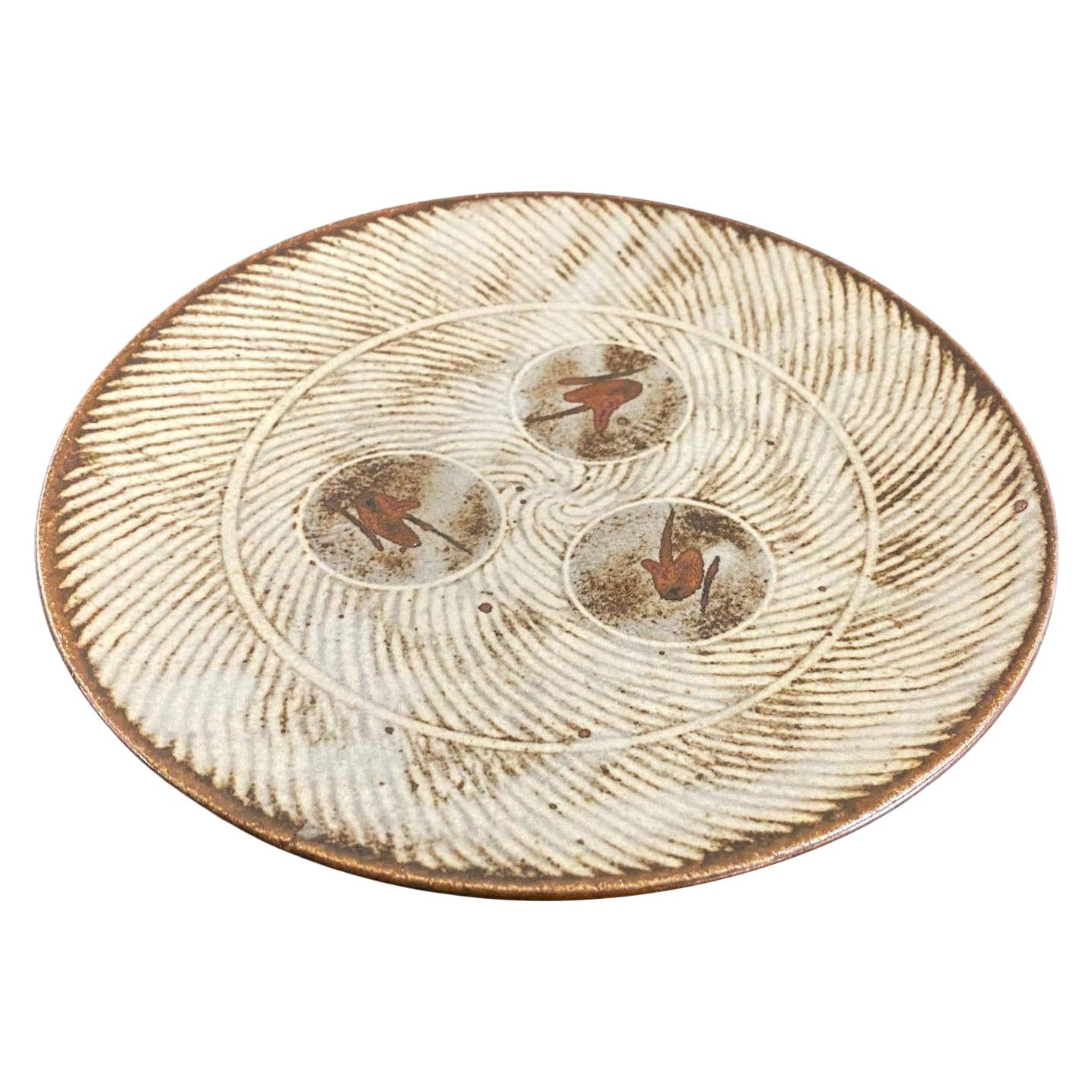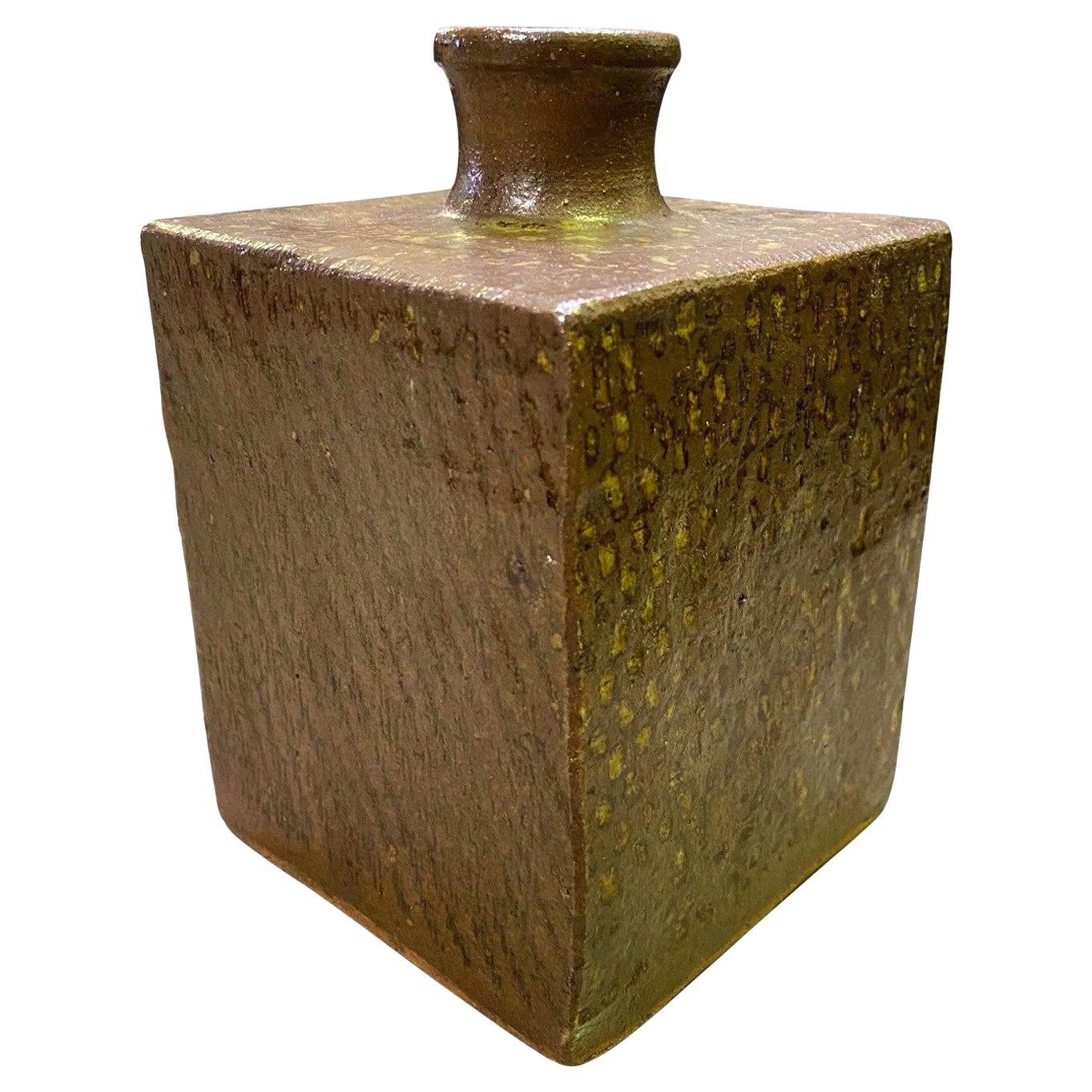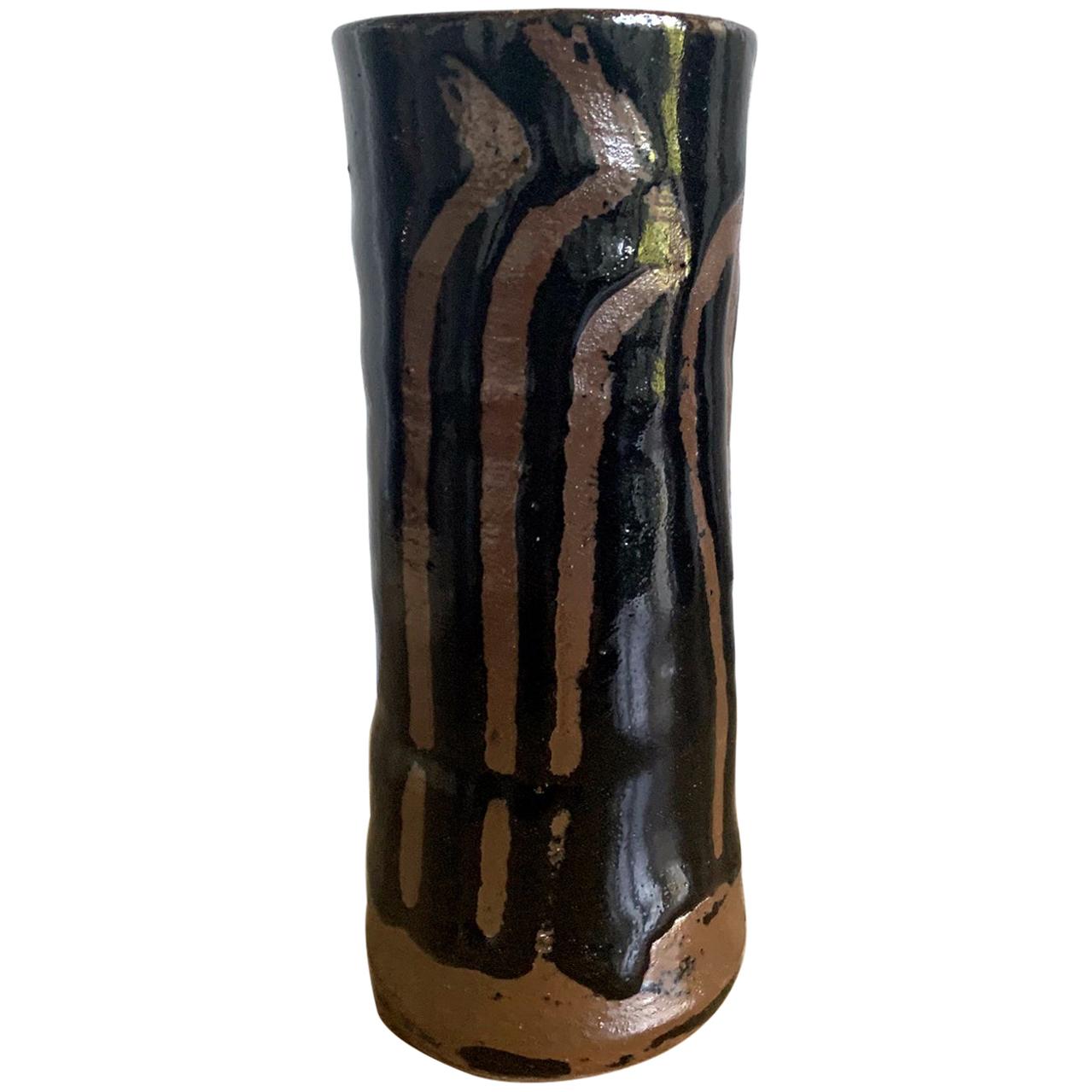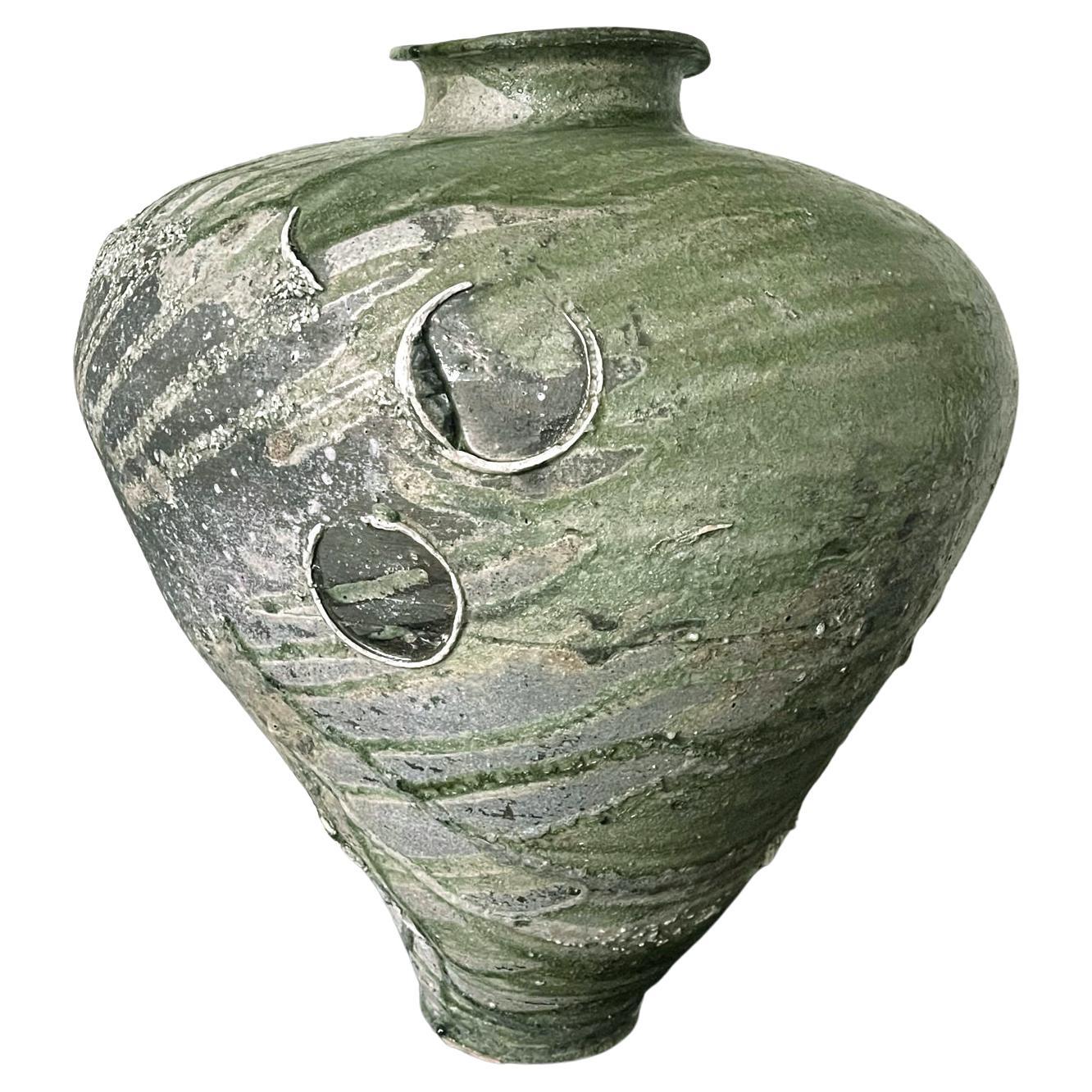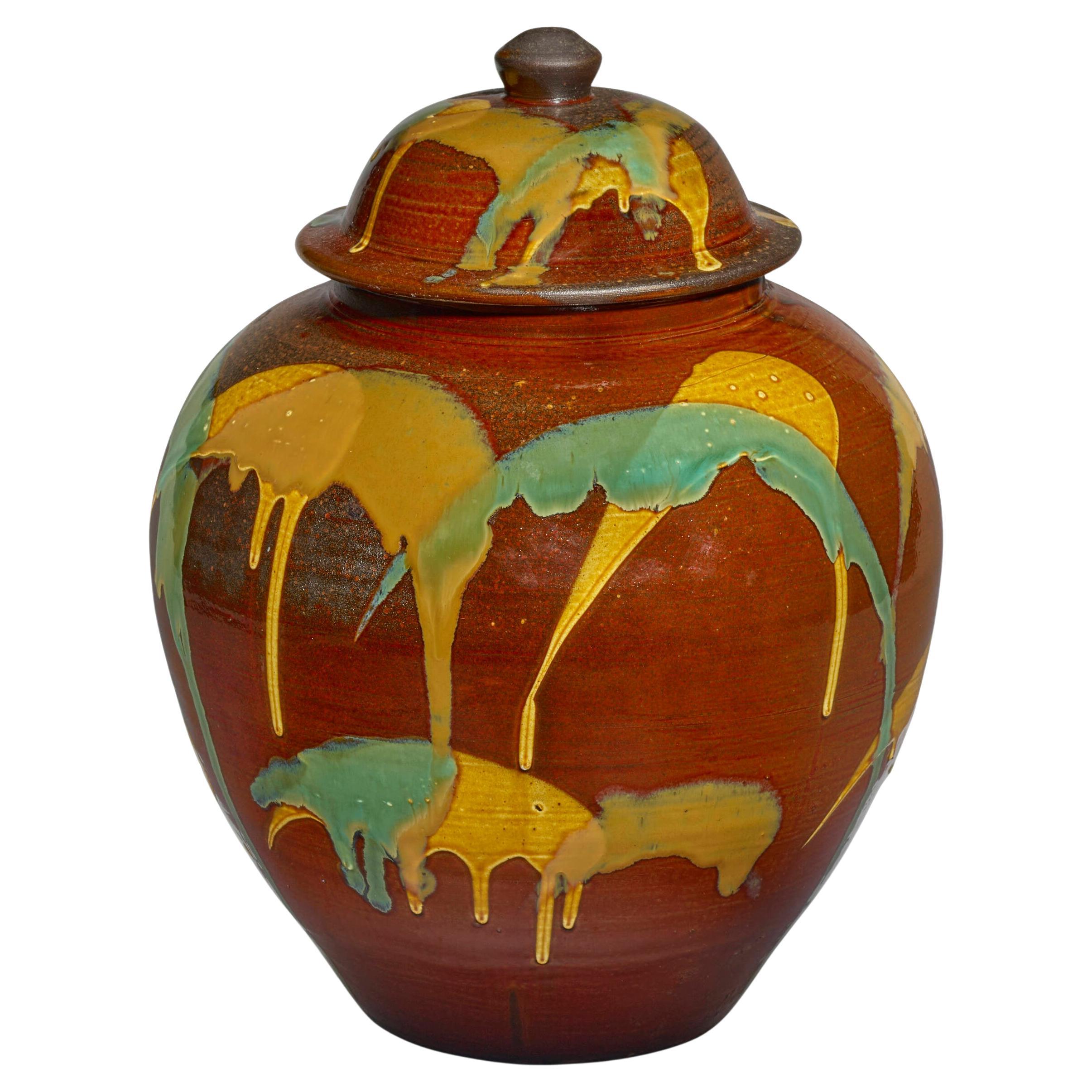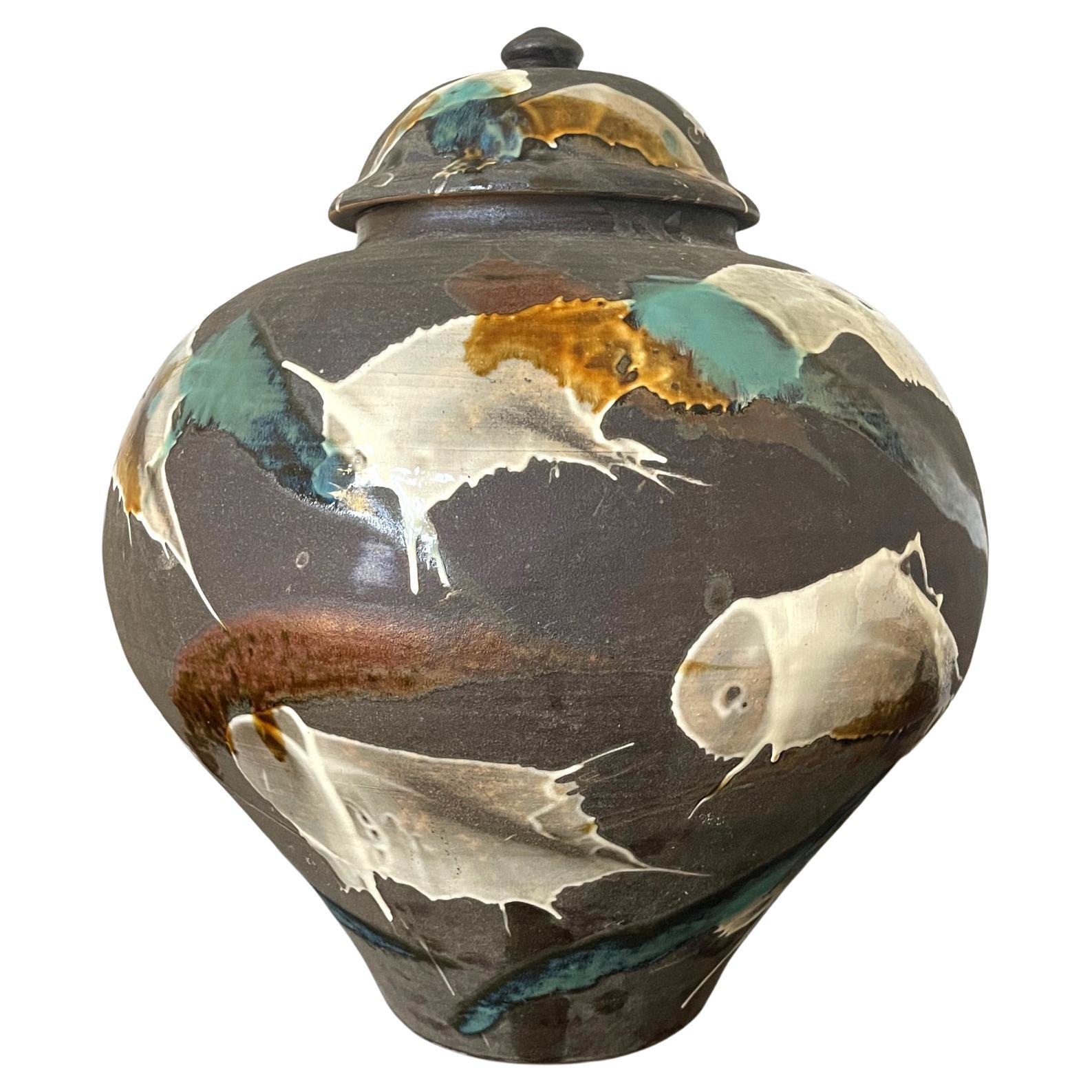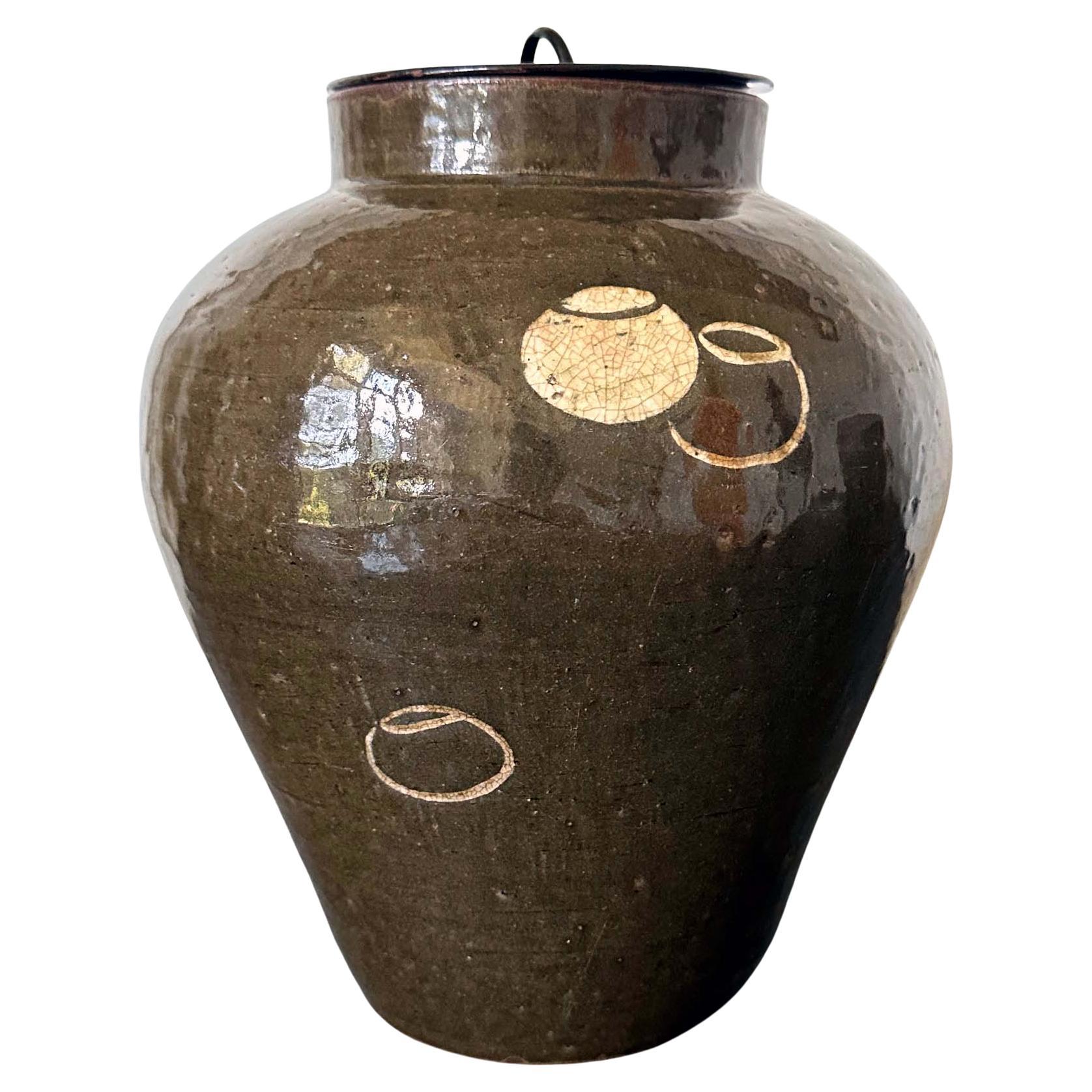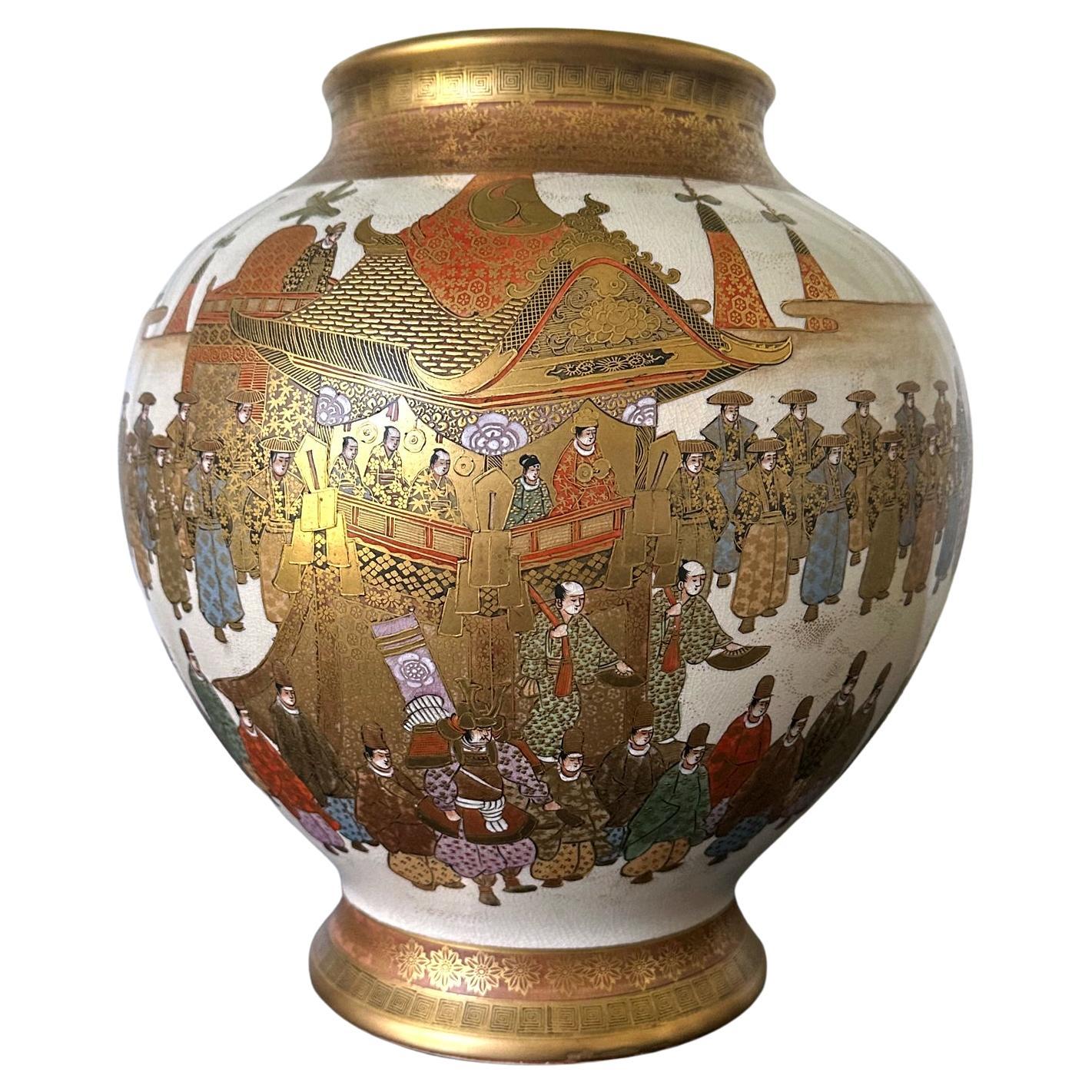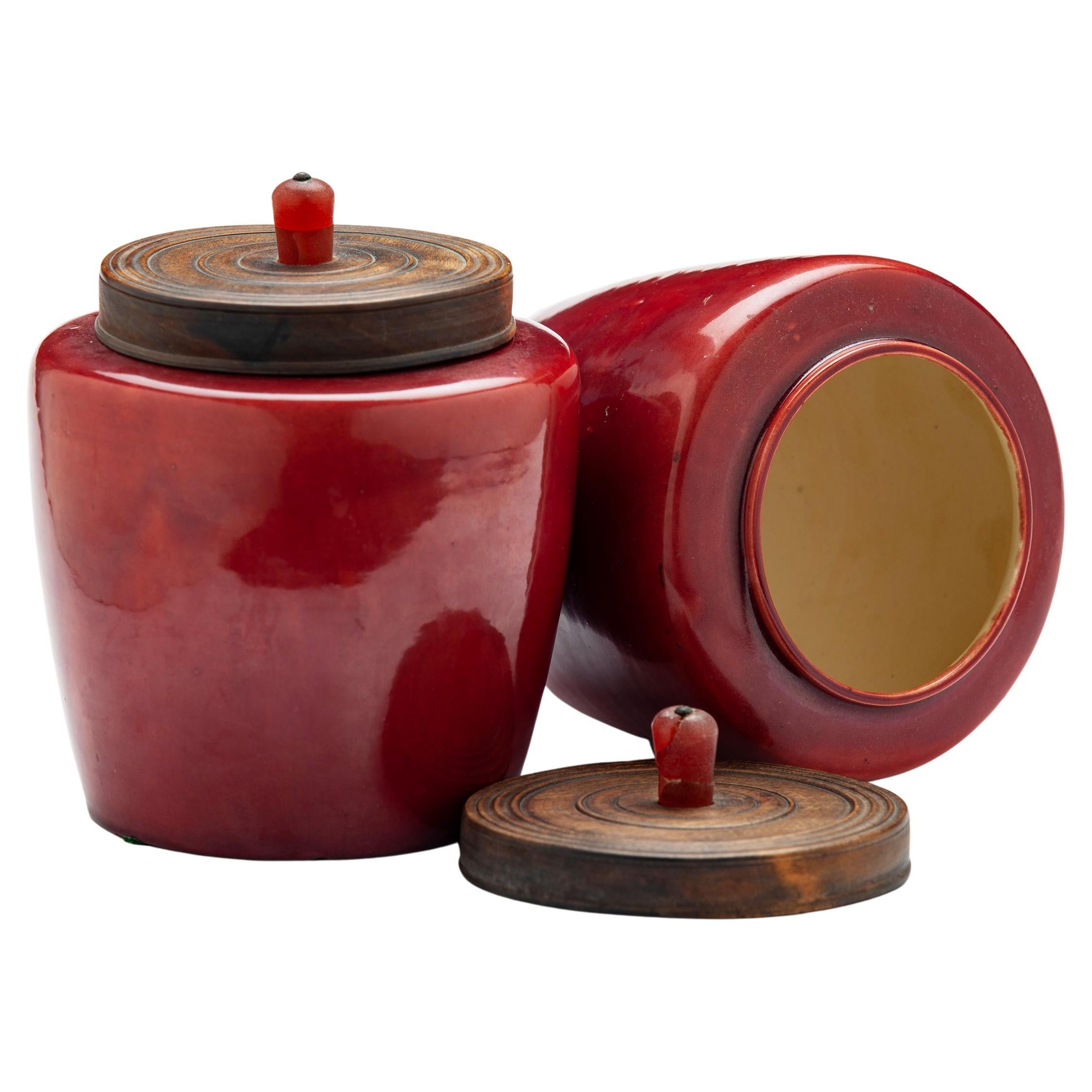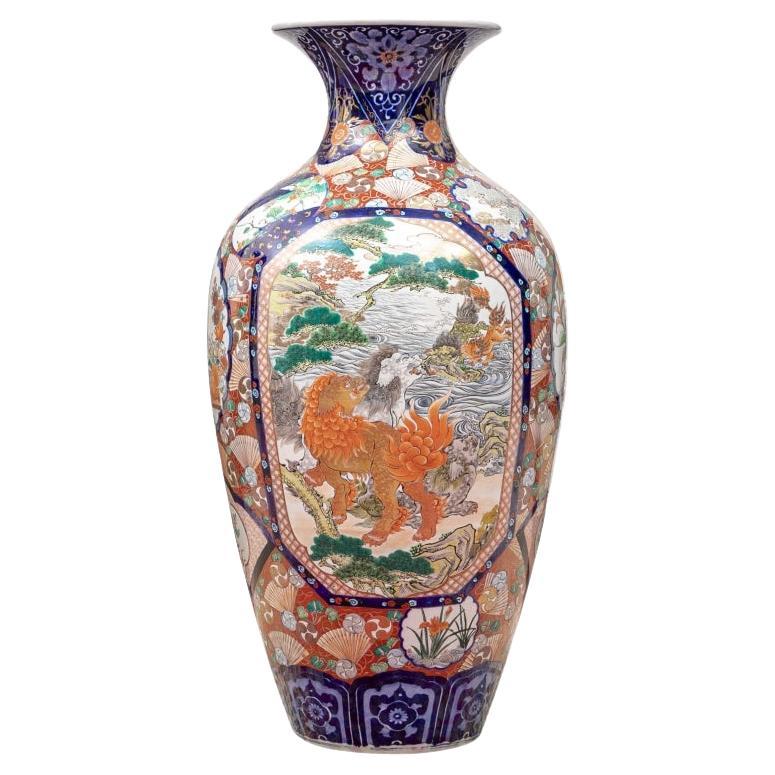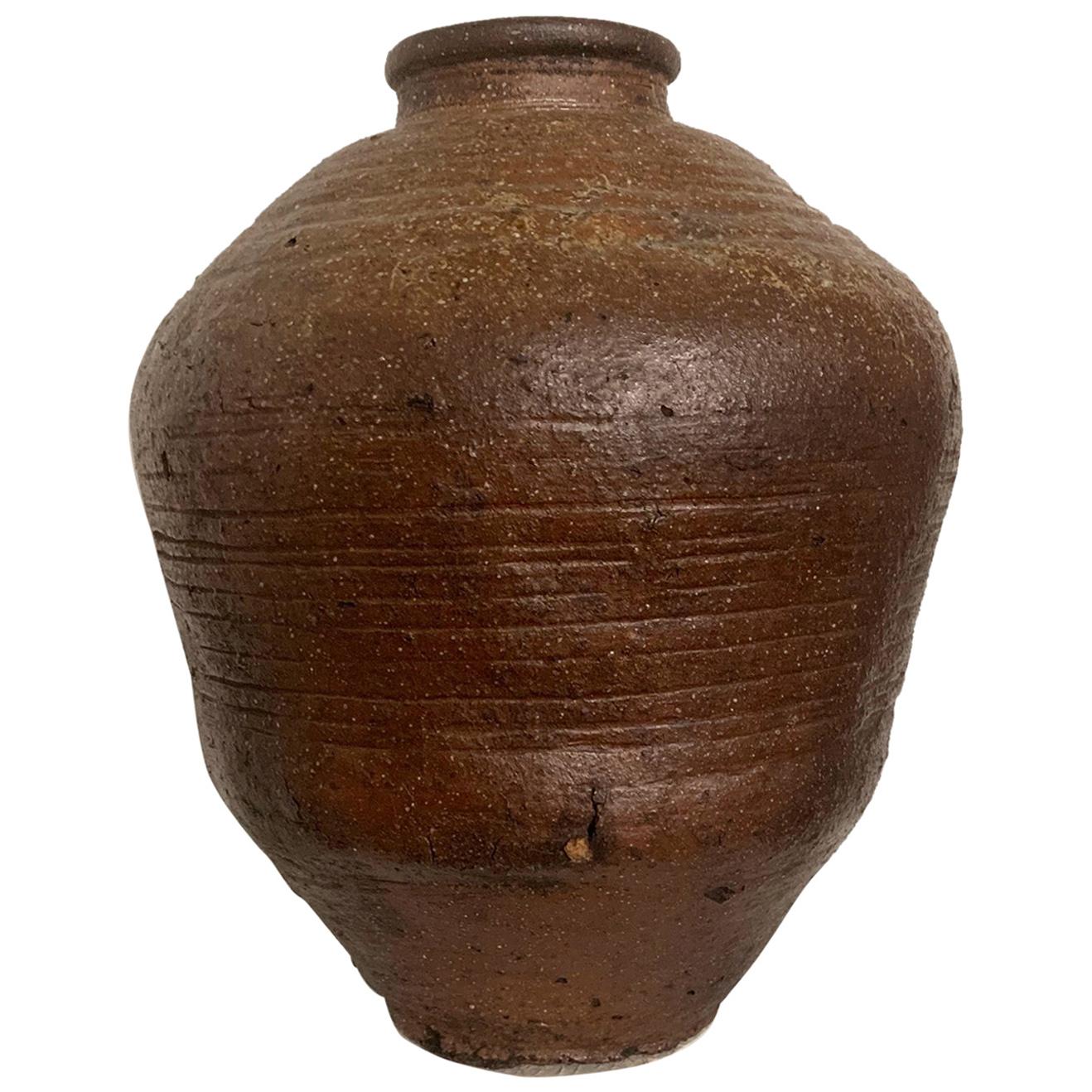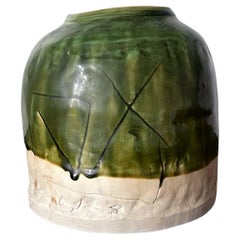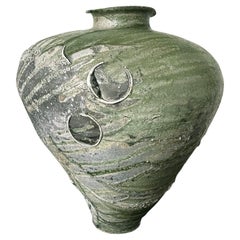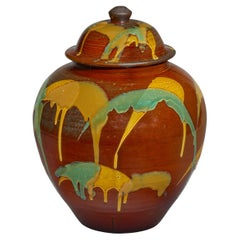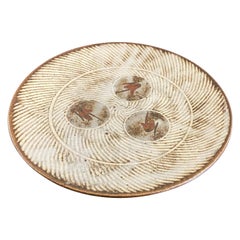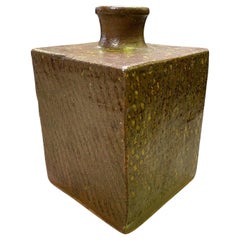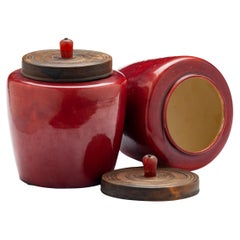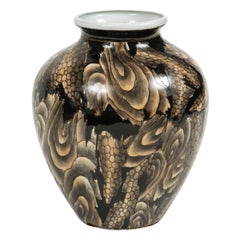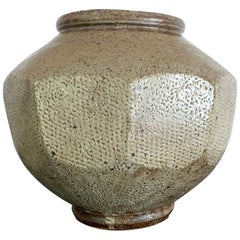
Japanese Mingei Ceramic Jar Tatsuzo Shimaoka
View Similar Items
Want more images or videos?
Request additional images or videos from the seller
1 of 13
Japanese Mingei Ceramic Jar Tatsuzo Shimaoka
About the Item
- Attributed to:Tatsuzo Shimaoka 2 (Artist)
- Dimensions:Height: 8 in (20.32 cm)Diameter: 9 in (22.86 cm)
- Style:Modern (Of the Period)
- Materials and Techniques:
- Place of Origin:
- Period:
- Date of Manufacture:1960s
- Condition:Wear consistent with age and use. Kiln variation during the making process.
- Seller Location:Atlanta, GA
- Reference Number:1stDibs: LU945017470692
About the Seller
4.9
Platinum Seller
Premium sellers with a 4.7+ rating and 24-hour response times
Established in 2006
1stDibs seller since 2010
551 sales on 1stDibs
Authenticity Guarantee
In the unlikely event there’s an issue with an item’s authenticity, contact us within 1 year for a full refund. DetailsMoney-Back Guarantee
If your item is not as described, is damaged in transit, or does not arrive, contact us within 7 days for a full refund. Details24-Hour Cancellation
You have a 24-hour grace period in which to reconsider your purchase, with no questions asked.Vetted Professional Sellers
Our world-class sellers must adhere to strict standards for service and quality, maintaining the integrity of our listings.Price-Match Guarantee
If you find that a seller listed the same item for a lower price elsewhere, we’ll match it.Trusted Global Delivery
Our best-in-class carrier network provides specialized shipping options worldwide, including custom delivery.More From This Seller
View AllJapanese Ceramic Vase Mingei Style Hamada Shoji
By Hamada Shoji
Located in Atlanta, GA
A heavily potted stoneware vase in cylindrical form, decorated with abstract strokes in iron rust glaze (known as Persimmon Glaze in Japanese) on a black glazed background. The pattern suggests autumn grasses, and it was applied with free hands. The vase is attributed to Japanese potter Hamada Shoji...
Category
Late 20th Century Japanese Arts and Crafts Ceramics
Materials
Ceramic
Japanese Modern Studio Ceramic Oribe Jar by Ryoji Koie
By Ryoji Koie
Located in Atlanta, GA
A glazed ceramic vessel by Japanese potter Ryoji Koie (1938-2020). Hand-built with intention to be seen as such, the tsubo has a primordial irregular form with a small opening and a swelled body resembling a beehive. The upper body was covered in a glassy green oribe glaze with fine crackles, highlighted with three incised geometrical symbols. The lower body is unglazed and exposed the white clay with marks of the hand-making pinches and kneading along the base. The base also shows highly irregular surface due to the seashell spur marks and clay pitting in the kiln during the firing process. All these occurrences honestly preserved and presented as part of the character of this wonderful modern piece. The jar comes with a plain wooden tomobako box.
"One of Japan’s most versatile and forward-thinking contemporary artists, KOIE RYOJI...
Category
21st Century and Contemporary Japanese Modern Ceramics
Materials
Ceramic
Massive Ceramic Jar Tsubo by Japanese Potter Tsujimura Yui
By Tsujimura Yui
Located in Atlanta, GA
A massive and magnificent ceramic Tsubo jar by Japanese potter Tsujimura Yui (1975-). Inspired by the techniques and aesthetics of the early medieval Sue ware, the artist hand builds an impressive voluminous oviform, irregular by intention, from a combination clay from both Shigaraki and Iga, coarse by nature and rich in feldspar. Fired on their sides horizontally, the surface of the thick wall tsubo is covered with streaks and drips of natural ash glazes in shades of green and blue, forming an abstract and mesmerizing pattern that resembles geothermal earth activity. Additional ashes are blown during the firing to accentuate the textures. Most recognizably, there are many circular marks scattered on the surface of his archaic looking vessels. That is resulted from using stacked tea bowls to prevent the conjoining of the vessels. After the firing, the stacked vessels are chipped away, leaving behind those circular impression, as well as deep pools of glaze which gather where they were placed.
Born in 1975, Tsujimura Yui is the first son of the contemporary ceramic artist Tsujimura Shiro...
Category
Early 2000s Japanese Modern Ceramics
Materials
Ceramic
Japanese Ceramic Jar with Expressive Glaze Onda Yaki
By Onda Yaki
Located in Atlanta, GA
A Japanese lidded ceramic jar from the kiln of Onda Yaki, circa 2007. The stoneware jar impresses the viewer with a robust bulbous form. and exuberantly splashed and dripped glaze in...
Category
Early 2000s Japanese Organic Modern Ceramics
Materials
Ceramic
Large Japanese Contemporary Ceramic Jar from Onda Yaki Kiln
By Onda Yaki
Located in Atlanta, GA
A large Japanese lidded ceramic jar from the kiln of Onda Yaki, circa 2010. The stoneware jar impresses the viewer with a robust bulbous form. Its black body is nearly unglazed but exuberantly splashed with strokes of slip glazes of white, yellow and blue. The visual effect is wonderful that it appears traditional and contemporary at the same time. The tri-color glaze calls to mind the San-Cai from Chinese Tang dynasty, yet the application is akin to abstract painting on canvas.
Onda Yaki also spelled as Onta Yaki also spelled Onta, is a type of Japanese pottery produced in and around the village of Onta in Oita Prefecture in Kyushu Island. It was founded in 1705. Closely associated with Mingei folk art, Onda ware was inscribed by the national government in 1995 as an Intangible Cultural Property
Background from Pucker Gallery where the jar was exibited and purchased.
"In his search for true folk pottery, the Japanese philosopher Soetsu Yanagi...
Category
2010s Japanese Organic Modern Ceramics
Materials
Ceramic
Japanese Ceramic Seto Tea Leaf Tsubo Jar Edo Period
Located in Atlanta, GA
A Japanese glazed ceramic jar with a lacquered wood lid circa 19th century of late Edo to early Meiji Period. The stoneware tsubo was used as a storage vessel for produce such as tea...
Category
Antique 19th Century Japanese Edo Ceramics
Materials
Ceramic
You May Also Like
Tatsuzo Shimaoka Signed Japanese Mingei Rope Inlay Ceramic Pottery Bowl Plate
By Tatsuzo Shimaoka 2
Located in Studio City, CA
An exquisitely decorated and wonderfully executed ceramic Mingei glazed plate/ low bowl by Japanese National Treasure and Mashiko pottery master Tatsuzo Shimaoka. This work displays his famous Jomon Zogan rope inlay design, hand-painted decoration, and has his impressed "Ta" signature on the base.
Shimaoka, who started as an apprentice to famed Japanese potter Shoji Hamada in 1946 before opening his pottery studio, has exhibited worldwide including in North America, Asia, and Europe. In 1996 he was bestowed the title of Japanese Living Treasure...
Category
Mid-20th Century Japanese Showa Ceramics
Materials
Earthenware
Tatsuzo Shimaoka Japanese Glazed Rope Inlay Pottery Ceramic Vase with Signed Box
By Tatsuzo Shimaoka 2
Located in Studio City, CA
A wonderfully designed and gorgeously colored coveted square Mingei bottle vase by Japanese National Treasure pottery master Tatsuzo Shimaoka. This vase is an early work of Shimaoka's before he started to use his impressed "Ta" signature. The rich colors are truly amazing and shift in the light.
The vase comes with a Shimaoka signed and sealed box.
The work is exquisite in every way and has a wonderful feel and heft to it.
Shimaoka, who started as an apprentice to famed Japanese potter Shoji Hamada in 1946 before opening his own studio, has exhibited worldwide including North America, Asia, and Europe. In 1996 he was bestowed the title of Japanese Living Treasure...
Category
20th Century Japanese Showa Ceramics
Materials
Earthenware
Antique Japanese Awaji Burgundy Jars
Located in Malibu, CA
These antique Awaji jars have a deep burgundy color with a beautiful translucence created by such high temperatures during firing, that it borders on stoneware. The interior brush ma...
Category
Early 20th Century Japanese Anglo-Japanese Ceramics
Materials
Pottery
$2,879 Sale Price / set
20% Off
Japanese Ceramic Vase
Located in Palm Desert, CA
Very unique Japanese vase with abstract pattern in a variety of brown tones. The deepest brown glaze is raised, giving the vase a wonderful tactile texture.
Category
Late 20th Century Japanese Organic Modern Vases
Materials
Ceramic
Fine Japanese Imari Porcelain Temple Jar
Located in Bridgeport, CT
With cobalt blue decorated neck and base band. Large oval shaped panels on two sides featuring an amusing scene with rust tone and white foo lions in a river landscape looking back t...
Category
20th Century Meiji Ceramics
Materials
Porcelain
Shoji Hamada Mingei Kakiyu Kaki Japanese Pottery Vase with Signed & Sealed Box
By Shoji Hamada
Located in Studio City, CA
An exquisite, beautifully crafted, and designed gourd vase by master Japanese potter Shoji Hamada, which features a fine example of his famed rich Kaki or persimmon glaze. The original Hamada stamped/sealed and signed box is included. Rare to find such a beautiful piece in such impeccable condition with its original signed box. Hamada named this vase Kaki-Yu-Kabin (flower vase with Kakiyu glaze).
A very rare form. One Japanese ceramic dealer whom we know said he had only seen one or two other examples like this by Hamada before.
This work is sure to shine in any Japanese pottery/art collection or setting.
Shoji Hamada was designated a Living National Treasure in Japan in 1955. In 1968 he received Japan's highest artistic award the Order of Culture. His work can be found in collections and museums worldwide including Tokyo’s Japan Folk Art Museum and The Tate Museum...
Category
Mid-20th Century Japanese Showa Ceramics
Materials
Stoneware
Recently Viewed
View AllMore Ways To Browse
Shoji Hamada Pottery
Japanese Ceramics Mingei
Korean Ceramic Jar
Japanese Storage Jar
Japanese Mashiko
Ancient Korean Pottery
Mashiko Pottery
Mashiko Stoneware
Shimaoka Tatsuzo
Jomon Pottery
Hand Painted Japanese Box
Contemporary Japanese Bamboo
Qing Famille Rose
Asian Boat
Asian P
Chinese Antique Green Glaze Ceramics
18th Century Chinese Qianlong Porcelain
Famille Rose 19th Century
